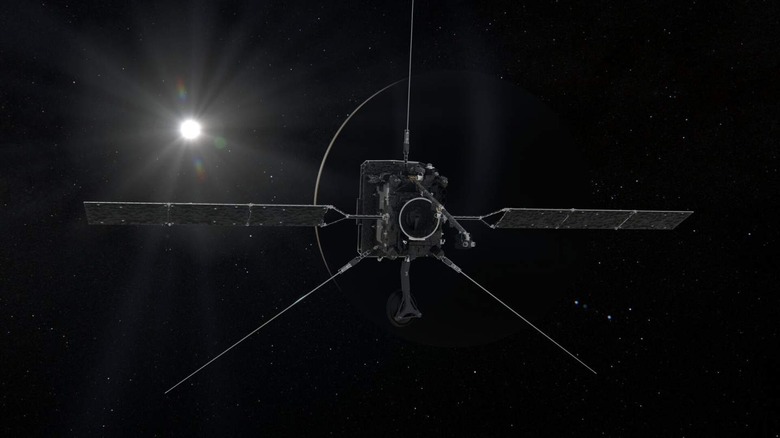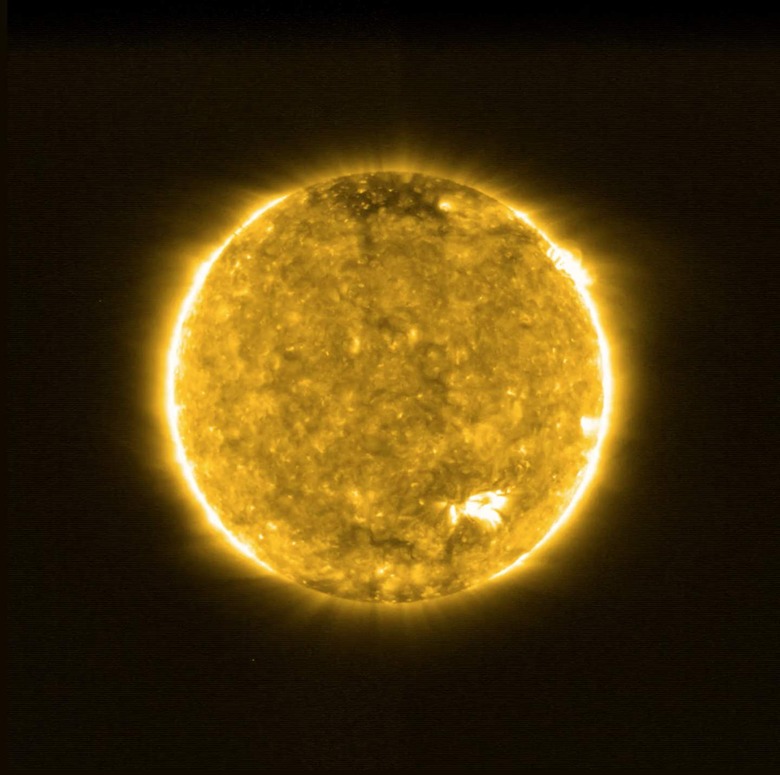ESA's Solar Orbiter Explained: What Does It Do And Why Is It Important?
Though it's the center of our solar system, there's a lot we still don't know about the sun. It's difficult to study the sun in detail, not only because it's far away but also because it gives off so much heat and radiation that it's hard for spacecraft to get close to it without being destroyed. But a recently launched mission from the European Space Agency (ESA) and NASA, Solar Orbiter, will get the best look yet at the sun, including parts of it never seen before. Here's everything you need to know about this exciting mission.
Solar Orbiter was launched in February 2020 and is, according to ESA, the "most complex scientific laboratory ever to have been sent to the sun." It has 10 different instruments on board, including instruments for measuring magnetic fields, for measuring solar winds, and several different types of imagers for capturing the sun in the ultraviolet and X-ray wavelengths.
To protect it from the extreme heat of the sun, it is armed with a 324-pound heatshield made of layers of very thin titanium foil which, according to NASA allows the spacecraft to withstand temperatures of up to 970 degrees Fahrenheit.
Peering at the sun's poles
One of the most exciting parts of the Solar Orbiter mission is that it will observe the north and south poles of the sun, which have never been imaged before. It isn't easy to get a spacecraft into such an orbit around the sun though, so it will take several years of maneuvering until the orbiter is able to see the poles. To help it along its journey, Solar Orbiter passes by both Earth and Venus and uses their gravity to adjust its course, swinging out from the flat plane in which the planets orbit and into an angled plane, called an inclination. That increasingly angled orbit allows it to image more of the sun as its seven-year mission progresses (via ESA).
Scientists want to study the sun's poles in order to understand more about the sun's magnetic field. This magnetic field is important in space weather, which is the name for how the sun affects other parts of the solar system. For instance, the sun gives off powerful solar winds – streams of charged particles that head out from the sun and can interfere with electronics in space and satellite communications on Earth. Solar Orbiter aims to learn about how these solar winds are generated and how they are accelerated to high speeds.
New discoveries about the sun
Solar Orbiter has only just begun its main science phase, but it has already made some exciting discoveries about the sun. Earlier this year it imaged its first coronal mass ejection, in which particles erupt from the sun with tremendous force.
It also discovered a phenomenon called "campfires," which are miniature solar flares erupting on the surface of the sun. "The campfires are little relatives of the solar flares that we can observe from Earth, million or billion times smaller," said David Berghmans, Principal Investigator of one of Solar Orbiter's instruments, in a statement (via ESA).
"The sun might look quiet at the first glance, but when we look in detail, we can see those miniature flares everywhere we look."


